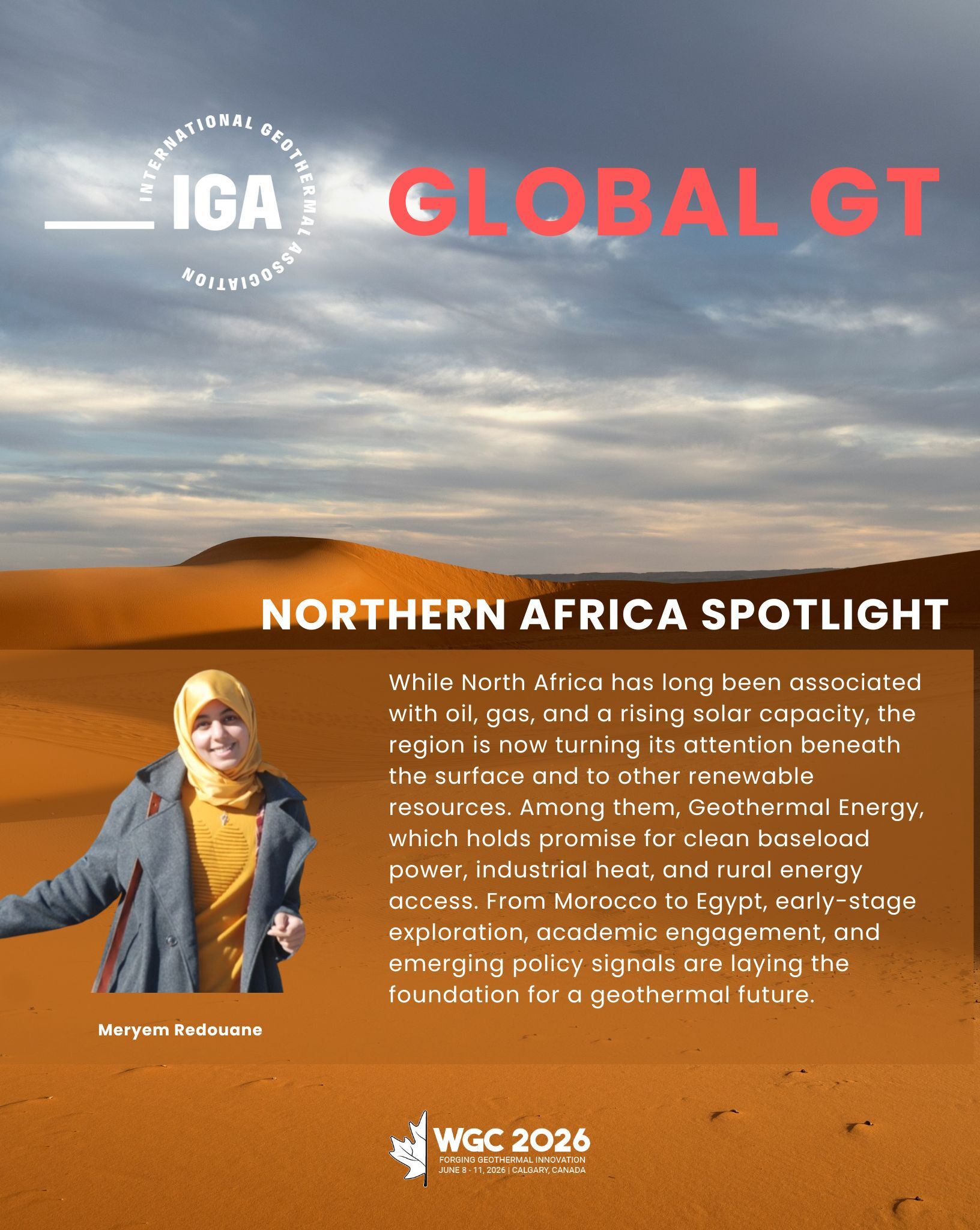Subsurface in focus: Emerging geothermal zones across the region
Geothermal prospects in North Africa are closely tied to tectonic boundaries, volcanic activity, and elevated heat flow in some basins and mountain regions. Four countries stand out for their ongoing progress:
Morocco
- Promising geothermal gradients have been identified in both the northeastern and southern regions.
- In the northeast, areas such as Jbel Gourougou show potential for binary cycle electricity generation, alongside agricultural and tourism related cascading uses.
- In the south, particularly in the coastal basins of the Southern Provinces, five geothermal zones have been identified: Bir Gandouz, Dakhla-El Argoub, Boujdour-Lamsid, El Marsa-Laâyoune–Tarfaya, and Essemara. These areas are suitable for greenhouse heating, aquaculture, balneotherapy, and potentially electricity generation, especially in Boujdour-Lamsid.
Algeria
- Over 240 thermal spring sites have been identified and studied, with water temperatures ranging from 22°C to 98°C.
- Key hotspots include Hammam Bouhnifia (68°C), Hammam El Biban (80°C), and Hammam Maskhoutine (98°C).
- Current efforts focus on direct-use applications and the potential for geothermal powered hydrogen production via electrolysis. This approach could offer a clean, renewable hydrogen source, though technical and economic challenges remain.
- Public research programs are examining low enthalpy geothermal systems for industrial heat and sustainable development.
Tunisia
- Geothermal groundwater has long been used in agriculture, especially in southern regions like Kebili and Gabès.
- The government has supported geothermal use in greenhouse farming and desert agriculture, with growing interest in expanding its applications to aquaculture and balneotherapy.
Egypt
- Geothermal activity is primarily concentrated in the Gulf of Suez and the Red Sea rift zones.
- Current studies, based on geophysical surveys and borehole data, confirm Egypt’s potential for both electricity generation and direct-use applications.
- The country has included geothermal in its Sustainable Energy Strategy 2035, signaling policy level support for further development.
Policy spotlight: Foundations for future investment
Across North Africa, geothermal is gradually being integrated into national energy strategies, mainly for direct-use applications, with electricity generation as a long term goal:
- Morocco has explicitly included geothermal in its national energy plans and established a dedicated department to support development.
- Algeria is investing in research for industrial heat applications and hydrogen production through geothermal systems.
- Tunisia has promoted geothermal for agricultural use, with new interest in expanding to other sectors.
- Egypt has formally incorporated geothermal into its 2035 energy strategy, paving the way for future pilot projects.
Despite these positive developments, most countries still require robust regulatory frameworks, risk mitigation mechanisms, and commercial exploration licensing to attract private sector involvement and scale investment.
Traditional roots and modern applications
Geothermal has long been part of North Africa’s cultural and environmental landscape, particularly through natural hot springs and traditional hammams. Today, that legacy is evolving into diverse modern uses:
- Greenhouse heating and desert agriculture (Tunisia, Algeria, Morocco, Egypt)
- Aquaculture and balneotherapy (Morocco, Tunisia, Algeria, Egypt)
- Pilot projects in district heating (under study in Morocco)
- Hydrogen production potential (Morocco, Algeria, Tunisia)
North Africa and the road to WGC2026
North Africa stands as one of the world’s most promising yet underexplored geothermal frontiers. The technical potential is significant, the academic and research communities are engaged, and policy conversations are gaining momentum.
As we approach WGC2026 in Calgary, it’s crucial to spotlight North Africa’s geothermal journey, one that may still be in its early stages, but is fueled by science, ambition, and local commitment. Elevating this story now will encourage partnerships, unlock investment, and demonstrate that geothermal energy in North Africa is more than a possibility; it is a resource ready to be tapped.
Author: Meryem Redouane

